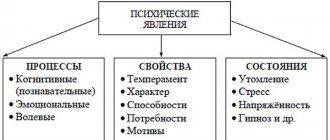Communication functions are very important for the characteristics of communication. After all, communication is a complex multilateral process of communicative interaction between human individuals, consisting in the mutual exchange of data, comprehension and perception of communication partners of each other. Communicative interaction is considered one of the core concepts in psychological science today. Without communications, it is impossible to comprehend the process of formation of the personality of an individual, to trace the patterns of social development.
Communication is characterized by multifunctionality. There are five main functions of communicative interaction. Communications primarily play a connecting role in social human activity. This function is conventionally called pragmatic and acts as the most important factor in uniting individuals in the course of any common activity.
Communication is...
Communication is a connection between people, during which psychological contact appears. It manifests itself in mutual influence, -understanding, -experience, and in the exchange of information, thoughts, ideas, emotions.
In the modern world, the scale of data that needs to be urgently transferred to someone has increased significantly. Therefore, the intensity and importance of communication increases, and along with this, the methods for implementation (messengers, video calls, etc.).
Communication in psychology consists of 3 important aspects that are intertwined:
- The purpose is the reason for which contact and information transfer occur.
Animals that also communicate can transmit an alarm signal to warn that danger is nearby. Or for the primitive attraction of a sexual partner. Thus, they satisfy their biological needs. As for a person, communications can be cultural, social, aesthetic, creative, cognitive - for the growth and development of the individual. - Content is the data that is transmitted during communication. In the animal world, this is, for example, information that there is food nearby.
For people, the object of conversation can be very different. May include a skill or experience, feelings that are conveyed to each other.
- Media is a way of transmitting information.
Because communication is not only words and the use of language (what is it?), writing. Signals can also be transmitted using smells, a visual component, or by touching another person.
Classification according to E.I. Rogov
E.I. Rogov identifies 3 dominant types of social interaction: imperative, manipulative and dialogical.
Imperative
In the psychology of communication it is called authoritarian or directive. It is based on the desire of one person to subjugate another. This manifests itself in the desire to control his thoughts and behavior in order to perform the necessary actions.
An authoritarian personality does not view their partner as a person with their own opinions and emotions. In imperative communication, a person does not hide his desire to subjugate another.
Manipulative
It has similar features to directive. His goal is similar, but the manipulator hides his true intentions. The partner is perceived as a person who has the necessary skills and qualities.
Manipulators often become victims of the communication they choose. He begins to perceive himself as one of the participants and his actions are assessed from the outside. A person becomes confused in his intentions and loses his inner core. The manipulator is characterized by deceit, constant self-control, loss of interest in the environment, a cynical attitude, mistrust and boredom.
Psychologists distinguish 4 types of manipulative communication:
- active – control is carried out through active influence. A person takes advantage of his social status. His main life principle is to be in charge everywhere and manage everyone;
- passive - the manipulator plays the role of the helpless, allowing people to provide him with help and support. Adheres to the principle of not annoying others;
- competitive – for a person, life is associated with constant competition, a chain of victories and defeats. He sees himself as a fighter, so those around him are perceived as potential rivals and enemies. His main life goal is to win at any cost;
- indifferent – the manipulator portrays detachment, indifference, and therefore tries to avoid social contacts. Uses alternately active and passive means. Tries to reject the care of others.
Psychologists classify imperative and manipulative types of communication as monologue. A person views his interlocutor as a tool to achieve a goal, ignoring his emotions and desires. Therefore, the manipulator communicates with his own tasks and goals.
Dialogical
This form is the opposite of the imperative and malipulative options, because it is based on the equality of its participants. It is based on humanistic principles and in dialogue the interlocutors try to achieve mutual understanding and get to know the other person better. To implement a dialogic form of communication, a number of conditions must be met:
- attuned to the emotions and psychological state of oneself and the interlocutor;
- trust in the interlocutor without assessing his personality;
- participants in the dialogue perceive each other as equal interlocutors with the right to their own opinion. Each of them recognizes the other's right to make decisions;
- during the conversation, participants look for common problems and unresolved issues;
- communicating with a person on one’s own behalf, expressing one’s thoughts and feelings.
Dialogue is considered the perfect form of communication, which allows you to reveal a person’s character and establish trusting relationships on a deep level. A person must be psychologically prepared for such interaction and perceive the interlocutor as an equal participant in the dialogue.
Communication functions
Although we understand the importance of relationships with other people, it is not always possible to grasp all the functions of communication. Psychologist V.N. Panferov identified 6 main points:
- communicative – interaction of people at different levels – from individual to social;
- cognitive – understanding of the transmitted information;
- informational – exchange of data between each other;
- creative – the formation of new connections between people, their development;
- conative – leadership and fulfillment of roles in relation to each other;
- emotive – emotional contact between people.
In other sources you can see a classification into 4 functions:
- syndicative – an association of people;
- instrumental – transmission of information, a way of managing society;
- translational - transfer of judgments, assessments, methods of activity;
- self-expression is an opportunity to show and present oneself to others, for mutual understanding.
Or a more concise and generalized division:
- socialization – education of interaction skills in society (what is this?); mastering rules and regulations;
- control of society - organization of people's behavior and work;
- expressive function – understanding the emotions, feelings, experiences of others.
Number of participants in the communication process
Several people can take part in a conversation, but not all participants will communicate with each other.
- Personal-group or socially oriented - the initiator interacts with each member of the group. In the process, personal and group goals and objectives are formulated and reviewed. An example of personal-group communication is communication between a boss and his subordinates.
- Interpersonal or person-oriented - in the process of interaction with a person, the interlocutor seeks to get to know him better or obtain the necessary information. Participants in communication may view each other as equal partners or tools to achieve their goals.
- Intergroup – contact between two groups. Their goals and objectives may coincide, which will allow them to solve large-scale problems. Or the views are opposite, which will result in conflict. Examples of intergroup communication are sports fan meetings or graduation discussions between several classes. Each team member is the bearer of a group task and can defend the interests of all its members.
A person can interact with one interlocutor or a couple of people, or with a large number of others. Everything is determined by the goals and objectives of communication and the social status of the interlocutors.
Forms of communication
Characterizing communication, forms are its important feature and description. They depend on the purpose and content of communication. You can identify a large number of forms that complement each other and intertwine with each other.
But there are more typical and common options:
- Functional-role communication is communication during which people occupy specific social roles (what is this?). For example: driver – passenger, teacher – student, manager – subordinate.
- Informal communication is communication between people in an informal atmosphere. The simplest example is communication between relatives, friends, couples or spouses, and neighbors. It can also happen between work colleagues when they go out to lunch together and talk freely about various topics.
- Anonymous - the exchange of information between people who enter into casual communication. At the same time, I do not identify myself, or provide a small amount of data (name, profession). These strangers could meet and talk in public transport, at an art exhibition, in an elevator, in a cinema, in an anti-cafe.
They enter into a dialogue that was formed randomly - faceless in front of each other. And then the short relationship is broken.
Today, functional and anonymous communication is more common. The reason is the constant movement of people to new cities; large-scale development of service sectors; holding various lectures, webinars (what is this?), festivals.
Types and levels of communication
If we characterize the forms more precisely, we will get such a concept as “types of communication.” This classification describes the relationship, giving it bright and specific features:
- Primitive - when people look at the interlocutor as an object on whom they label “can be used / not needed.” And in accordance with this, they try to improve relationships, or they leave the dialogue, avoid it.
- Formal-role – when the method of communication, its essence and content is established. The social function of a person in a particular group plays an important role.
- “Contact of masks” - the usual hypocrisy (what is this?), insincerity or simply politeness is used without the desire to understand the interlocutor. The connection is formed exclusively on a superficial and formal level.
- Business - during a conversation, they focus on the matter, the issue. But at the same time, they can pay attention to some of the partner’s traits and take into account their character. Everything in order to achieve your goal.
- Manipulative - different methods are used to get benefits from the interlocutor (ostentatious indifference, false haste, assertion of authority).
- Secular - people do not express their real point of view, but simply talk about nothing. As a rule, the purpose of such chatter is to meet profitable people and to show off oneself to others.
- Spiritual – when the interlocutors know each other’s personalities well. When communicating, they take into account interests, preferences, and can suggest reactions to words.
Types provide a more diverse description of communication. Levels describe the attitude of people within the framework of communication. Researcher V.N. Sagatovsky highlights:
- The level of manipulation is the attitude and treatment of people as an object to achieve a goal.
- The level of “reflexive play” - a person in a dialogue understands that both have plans for each other. But they are trying to show that they just have normal communication without pitfalls.
- Level of legal communication - the behavior of the interlocutors is coordinated, taking into account specific rules and norms.
- Level of moral communication - the relationship arises on the basis of the unity of internal qualities.
Classification
Classification of communication depending on the goals of interaction and its level:
- Primitive. The interlocutor is considered as a means to achieve a goal and is assessed on a “needed – not needed” scale. This direct and simple attitude is not hidden.
- Manipulative – interaction for the purpose of obtaining one’s own benefit. Unlike primitive contact, manipulation is a subtle game, using many techniques and techniques (lies, flattery, and so on).
- Formal-role – completely regulated interaction. People interact with each other from the perspective of social roles. For example, boss and subordinate, teacher and student, doctor and patient, and so on.
- “Mask contact” is a dry, formal interaction in which standard, memorized phrases and gestures are used. It is designed to hide any emotions and true thoughts behind a mask of polite courtesy or indifferent calm. Also, some people use modesty, ostentatious caring and other techniques as a social mask. The participants in the interaction do not strive to understand each other.
- Business. The purpose of such social contact is to find a common solution on an issue of interest. The personality of the interlocutor is certainly taken into account, despite the fact that there are special rules and principles of business communication.
- Secular. Subjects do not express their thoughts, but say what should and is accepted in a particular situation. Small talk is, as a rule, “talk about nothing”, empty and aimless gossip.
- Spiritual. Such interaction is possible in close, trusting relationships. The interlocutors know each other well, respect beliefs, interests and views, are able to predict each other’s reactions, and communicate at the “Personality – Personality” level.
In addition, when determining the level of human interaction, they use a three-stage structure:
- The micro level is a single act of verbal or nonverbal contact that carries information and meaning. For example, nodding your head as a sign of agreement, shaking your hand as a sign of greeting, and the like.
- Mesa level - conversation and actions within the same topic, occurring once or repeated.
- The macro level is the established preferential strategy of interaction, chosen and developed by a person in the process of life, corresponding to the requirements of society, traditions and customs.
The following types of communication are also known:
- Direct. It is carried out using the vocal cords, eyes, ears, hands and other organs of the human body.
- Indirect. Interaction using specially manufactured devices and means of information exchange (by correspondence, by telephone, through Internet resources, and so on).
- Direct. Personal contact and direct perception of the interlocutor.
- Indirect. Interaction through intermediaries or representatives who transmit and reproduce the necessary information.
- Verbal – interaction through oral speech.
- Nonverbal - interaction without words, but with the help of facial expressions, gestures, postures, touches, and so on. Nonverbal body signals influence the perception of words and are processed unconsciously, while speech is conscious and consciously analyzed.
Words can be chosen and arranged into sentences; gestures and facial expressions are difficult to control; they are spontaneous, which is why they are more likely to express a person’s true thoughts and intentions.
The art of communication
It seems to many that having a competent conversation is a difficult task that only a few can master. Some may feel shy about other people, or don't know how to continue a conversation.
But if you want to improve communication, psychology will help improve your skills (what is it?).
Sensitivity
The ability to sense the emotional state of your interlocutor is very important when talking. Not only developed empathy (what is it?), but also constant observation and study of people can help with this.
Observation
Separately, it is worth highlighting the perception of a person with his behavior, facial expressions, and position in life. This will give us an idea of what style to talk in so that communication is pleasant for both parties.
Memory
If we remember most of what a person told us, then we can refer to it and mention it in the next conversation. In this way we show that we are interested in him - this brings us much closer together.
Broad outlook
When your interlocutor talks about a topic that you are completely far from, you can listen and learn something new. Instead of stopping him and showing your lack of interest.
In addition, it is worth studying different areas in order to be able to carry on conversations with people from different backgrounds.











